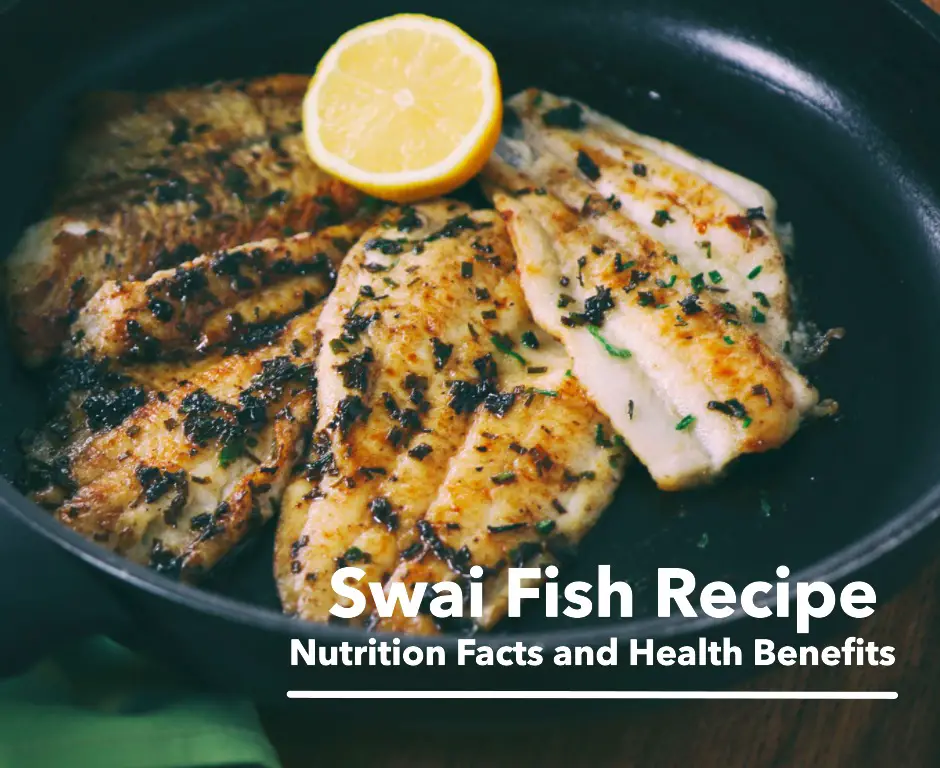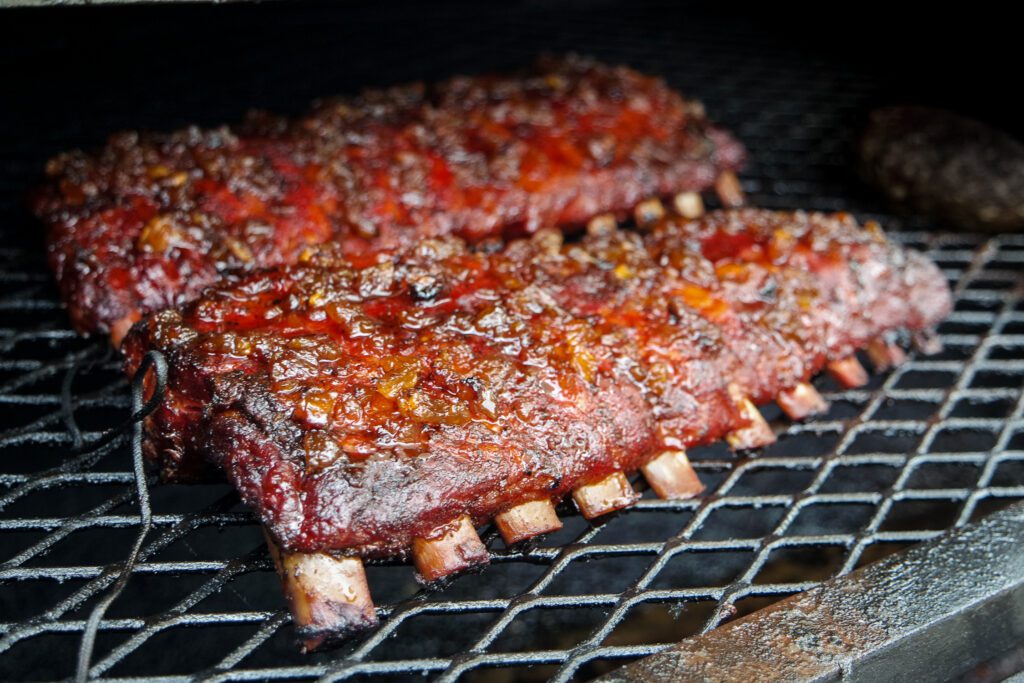Swai fish, also known as shark catfish or striped catfish, is a type of freshwater fish that belongs to the pangasiidae family. It’s a small fish that can grow up to 4 feet in length and weigh up to 44 pounds. Swai fish has become a popular seafood choice in many countries around the world due to its mild and delicate flavor, which is often compared to striped bass.
Despite its name, swai fish is not related to iridescent sharks, which belong to the family ictaluridae. Instead, it’s commonly farmed in Southeast Asia where it’s raised in freshwater ponds and rivers. Swai fish has quickly gained popularity due to its affordability and availability.
Swai fish has an elongated body with a pointed head and a wide mouth. Its skin is smooth and covered with small scales that give it a sleek appearance. The color of swai fish varies from light grey to dark brown on the back with silver-white sides and belly.
When cooked, swai fish has firm white flesh that flakes easily but remains moist and tender. It’s versatile enough for various cooking methods such as baking, grilling, frying or steaming.
If you’re looking for an affordable yet delicious seafood option, swai fish is worth considering. Its mild taste makes it perfect for those who don’t like strong-flavored seafood while still offering all the health benefits associated with eating seafood such as omega-3 fatty acids.
Nutritional Value of Swai Fish: How Does it Compare to Other Types of Fish?
Nutritional Profile of Swai Fish: How Does it Compare to Other Types of Fish?
High Protein and Vitamin B12 Content
Swai fish is a type of freshwater fish that has gained popularity in recent years due to its affordability and mild flavor. While some people may be hesitant to try this lesser-known fish, it actually boasts a nutritional profile that is comparable to other types of fish. One of the key benefits of swai fish is its high protein content, which makes it an excellent choice for those looking to increase their protein intake. In fact, a 3-ounce serving of swai fish contains around 15 grams of protein, which is roughly equivalent to the amount found in a similar serving size of salmon or tilapia.
Another important nutrient found in swai fish is vitamin B12, which plays a crucial role in maintaining healthy nerve cells and red blood cells. A single 3-ounce serving of swai fish provides almost 100% of the recommended daily intake for vitamin B12, making it an excellent source for this essential nutrient.
Quality and Water Source
While swai fish does offer many nutritional benefits, it’s important to choose a reputable source when purchasing this type of fish. The quality and safety of swai can be affected by the water quality in which it is raised. If the water source contains high levels of pollutants or toxins, these contaminants can accumulate in the flesh of the fish over time.
To ensure that you are getting a high-quality product, look for swai that has been sustainably farmed using responsible aquaculture practices. This will help ensure that the water source is clean and free from harmful contaminants.
Low Fat and Sodium Content
One advantage that sets swai apart from other types of fish is its low fat content. While some fatty fishes like salmon or tuna are prized for their omega-3 fatty acid content, others may prefer leaner options like swai. A 3-ounce serving of swai contains just 2 grams of fat, compared to 12 grams in a similar serving size of salmon.
In addition to its low fat content, swai fish is also low in sodium, making it a heart-healthy choice for those watching their salt intake. A single serving of swai contains just 50 milligrams of sodium, which is less than 2% of the recommended daily limit.
Convenient and Versatile
Finally, one benefit that makes swai fish a popular choice among home cooks is its convenience and versatility. Swai is often sold in large packages weighing several pounds, making it an excellent option for meal planning and preparation. It can be baked, broiled, grilled or fried and pairs well with a variety of seasonings and sauces.
Is Swai Fish Safe to Eat? Addressing Concerns about Health and Safety
Health Concerns about Swai Fish
Swai fish has gained popularity in recent years due to its affordability and mild taste. However, concerns about its safety have also arisen, particularly regarding the presence of contaminants such as mercury and antibiotics. While these concerns are valid, it is important to note that swai fish can still be safely consumed if certain precautions are taken.
EPA Safety Standards for Swai Fish
The Environmental Protection Agency (EPA) has set safety standards for swai fish, which include limits on the amount of contaminants such as mercury that can be present in the fish. As long as the fish meets these standards, it is safe to consume. It is important for consumers to purchase swai fish from reputable sources that adhere to these safety standards.
Certification by Reputable Organizations
Consumers can further reduce their risk of health issues by purchasing swai fish that has been certified by reputable organizations such as the Aquaculture Stewardship Council (ASC) and Global Aquaculture Alliance (GAA). These certifications ensure that the fish has been raised in a sustainable and responsible manner, free from harmful contaminants.
Proper Cooking Techniques
In addition to purchasing swai fish from trusted sources, proper cooking techniques can also help reduce any potential health risks associated with consuming the fish. The FDA recommends cooking all seafood to an internal temperature of 145°F or until opaque and firm. This ensures that any harmful bacteria or parasites are destroyed during the cooking process.
Potential Side Effects or Risks Associated with Eating Swai Fish
Harmful Bacteria in Swai Fish
Swai fish, like any other seafood, may contain harmful bacteria that can cause food poisoning. This is especially true if the fish is not properly handled and cooked. The risk of contamination increases during processing and transportation, which makes it important to purchase swai fish from a reputable source.
It is essential to cook swai fish thoroughly to reduce the risk of foodborne illness. Proper cooking will ensure that harmful bacteria are destroyed, making the fish safe for consumption. The recommended internal temperature for cooked fish is 145°F (63°C). It is also crucial to store and handle raw swai fish properly to prevent cross-contamination with other foods.
Risks Associated with Consuming Swai Fish
There are potential risks associated with consuming swai fish due to the possibility of contamination during processing and transportation. In addition to harmful bacteria, swai fish may contain high levels of mercury. Mercury exposure can lead to serious health problems, including neurological damage in young children and infants.
Individuals with weakened immune systems, pregnant women, and young children may be at a higher risk of experiencing negative side effects from consuming swai fish. It is recommended that these groups limit their consumption of seafood in general due to the potential risks associated with contaminants such as mercury.
Limiting Consumption of Swai Fish
To reduce the risk of exposure to harmful contaminants, it is essential to limit the consumption of swai fish and other types of seafood. When purchasing seafood products, it’s important to choose those that have been sustainably sourced and responsibly harvested.
Consumers should also be aware of where their seafood comes from and how it was processed before being sold in stores or served in restaurants. By taking these precautions, individuals can enjoy seafood without putting themselves at unnecessary risk.
What is Swai Fish? A Comprehensive Overview of Origin, Habitat, and Characteristics
Species and Scientific Name
Swai fish is a freshwater species that belongs to the Pangasiidae family. Its scientific name is Pangasius hypophthalmus, and it is also known as iridescent shark or sutchi catfish. The swai fish has gained popularity in recent years due to its mild taste and affordability.
Origin and Habitat
Swai fish is native to Southeast Asia, particularly in the Mekong River basin and the Chao Phraya River. It prefers warm waters with slow currents, making it well-suited for aquaculture. Swai fish can also be found in other countries such as Bangladesh, India, Laos, Cambodia, Thailand, Vietnam, and Indonesia.
Characteristics
The swai fish has a slender body with a silver-grey color that fades into white on its belly. It can grow up to 4 feet long and weigh up to 44 pounds. The swai fish has a smooth skin without scales but has barbels around its mouth that help it locate food. It feeds on planktonic organisms such as algae, small crustaceans, insects, and small fishes.
Aquaculture Practices
Swai fish has become popular among consumers due to its affordability compared to other types of seafood such as salmon or tuna. However, some concerns have been raised about the farming practices used for swai fish production. In some cases, farmers use antibiotics or chemicals to prevent diseases or promote growth in their farms.
To address these concerns, many countries have implemented regulations on aquaculture practices for swai fish production. For example, the United States Department of Agriculture (USDA) requires all imported swai fish products to meet specific safety standards before entering the country.
Farming Practices of Swai Fish: What You Need to Know
Intensive Farming Practices of Swai Fish
Farming practices for swai fish have been a topic of debate for many years. While swai fish is a popular and affordable source of protein, the farming practices used to produce it can have negative impacts on both the environment and human health. In this section, we will discuss the intensive farming practices used in swai fish farms and their potential effects.
Intensive Fish Farming
Swai fish farms use intensive fish farming practices to produce large quantities of fish for commercial purposes. This involves raising large numbers of fish in small, crowded tanks or ponds. The overcrowding of these tanks can lead to an increase in bacteria and disease, which can be harmful to both the fish and humans who consume them.
Bacterial Infections
Fish farming practices can lead to the spread of bacteria and disease among the farmed fish. This is because they are often kept in close proximity to each other, which makes it easier for bacteria to spread from one fish to another. To prevent bacterial infections from spreading throughout the entire tank or pond, farmers may treat sick fish with antibiotics or other drugs.
Antibiotic Overuse
The overuse of antibiotics in swai fish farming can contribute to the development of antibiotic-resistant bacteria. When antibiotics are used excessively, bacteria become resistant to them over time, which means that they no longer work effectively against bacterial infections. This poses a serious threat not only to human health but also animal health as well as environmental safety.
Tips on How to Cook Swai Fish Safely and Deliciously
Thawing Swai Fish Properly Before Cooking
To ensure that your swai fish is cooked safely and deliciously, it’s essential to thaw it properly before cooking. The best way to thaw frozen swai fish is by placing it in the fridge for several hours or overnight. If you’re short on time, you can also thaw the fish by placing it in a sealed plastic bag and submerging it in cold water for around 30 minutes. Avoid using warm water as this can cause bacteria to grow on the surface of the fish.
Using a Food Thermometer When Cooking Swai Fish
When cooking swai fish, always use a food thermometer to check its internal temperature. The United States Department of Agriculture recommends that all types of fish should be cooked until they reach an internal temperature of at least 145°F (63°C). Overcooking swai fish can cause it to become dry and lose its flavor, so take care not to cook it for too long.
Experimenting with Different Cooking Methods for Swai Fish
Swai fish is versatile and can be cooked in a variety of ways depending on your preferences. Some popular cooking methods include baking, grilling, or pan-frying. Baking is an easy way to cook swai fish as you can simply place it in the oven with some seasoning and let it cook through without having to watch over it constantly. Grilling gives swai fish a smoky flavor and crispy texture while pan-frying allows you to control the level of doneness more precisely.
Pairing Swai Fish with Complementary Flavors
To enhance the taste of your swai fish dish, consider pairing it with complementary flavors such as lemon, garlic, or herbs like parsley or dill. Lemon juice adds brightness and acidity while garlic provides depth and complexity. Herbs add freshness and balance out the richness of the fish.
Swai Fish Substitutes You Can Try Today
Substituting Swai Fish: A Guide to Trying New Flavors
Swai fish is a popular choice for seafood lovers due to its affordability and mild flavor. However, if you’re looking to switch things up in the kitchen, there are plenty of other fish varieties that can be used as substitutes for swai fish fillets. Here are some great options to consider:
Catfish: Similar Texture and Flavor
One of the closest substitutes for swai fish is catfish. This freshwater fish has a similar texture and flavor profile, making it an ideal replacement in recipes that call for swai. Catfish is also affordable and widely available, making it an easy option to find at your local grocery store.
Other Mild-Tasting Fishes
If you’re looking for something with a little more variety, there are plenty of other mild-tasting fishes that can be used as substitutes for swai. Tilapia, cod, and haddock are all popular choices due to their versatility in cooking and mild flavors that pair well with a variety of seasonings.
Canned Tuna or Salmon: Affordable Options
While swai is often used as an affordable alternative to other popular fish varieties, it’s important to note that there are other budget-friendly options available as well. Canned tuna or salmon can be used in place of swai in many recipes without sacrificing flavor or texture.
Consider Cooking Method
When searching for a substitute for swai fish, it’s important to consider the method of cooking as well. For example, if grilling is your preferred method, swordfish or mahi-mahi are both great options due to their firm texture and ability to hold up on the grill.
Experiment with Other Seafood Varieties
Finally, don’t be afraid to experiment with other types of seafood as substitutes for swai fish. Shrimp or scallops can add new flavors and textures to dishes while still maintaining the overall integrity of the recipe.
Delicious Dishes Prepared with Swai Fish: Recipes and Ideas
Frozen Swai Fish Fillets: Versatile and Easy to Cook
Frozen swai fish fillets are a great option for quick and easy meals. They can be used in a variety of dishes, from pan-frying to baking, making them versatile and convenient. Swai fish fillets have a mild flavor and firm texture, similar to other white-fleshed fish like flounder or American catfish, making them an excellent substitute for more expensive fish like salmon or shark.
One of the most popular types of swai fish is Vietnamese catfish, also known as striped pangasius or pangasius. This type of swai fish is commonly used in seafood dishes due to its affordability and availability. It’s important to properly cook swai fish fillets by seasoning them with herbs and spices or marinating them before cooking to avoid the fishy smell that some people associate with sharks or other seafood.
Swai Fish: A Delicious Alternative to Expensive Fish
Swai fish is an affordable alternative to expensive types of fish like salmon or shark. Swai has a mild flavor that pairs well with many different seasonings and sauces, making it a versatile ingredient in many different dishes. It’s also low in fat and high in protein, making it a healthy choice for those looking for a nutritious meal.
One delicious dish that can be made with swai fish is pan-fried swai fillets with lemon butter sauce. To make this dish, simply season the swai fillets with salt and pepper before pan-frying them until they’re golden brown on both sides. Then make the lemon butter sauce by melting butter in a small saucepan over medium heat before adding fresh lemon juice, garlic powder, salt, and pepper. Drizzle the sauce over the cooked swai fillets before serving.
Another great recipe idea is baked swai fillets with vegetables. Simply place seasoned swai fillets on top of a bed of vegetables like zucchini, bell peppers, and onions before baking them in the oven until they’re cooked through. This dish is healthy and flavorful, making it a great option for those looking to eat more vegetables.
Should You Include Swai Fish in Your Diet?
In conclusion, swai fish can be a valuable addition to your diet if consumed in moderation and with proper knowledge of its nutritional value, farming practices, and potential risks. While it may not have the same omega-3 fatty acid content as other types of fish, it is still a good source of protein and low in calories. However, it is important to be aware of the concerns surrounding its farming practices and potential for contamination.
If you choose to include swai fish in your diet, make sure to purchase from reputable sources that follow sustainable and ethical farming practices. When cooking swai fish, ensure that it is cooked thoroughly to reduce the risk of any potential bacteria or parasites.



0 Comments